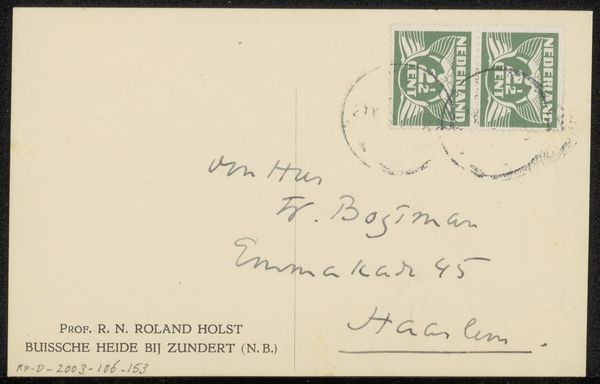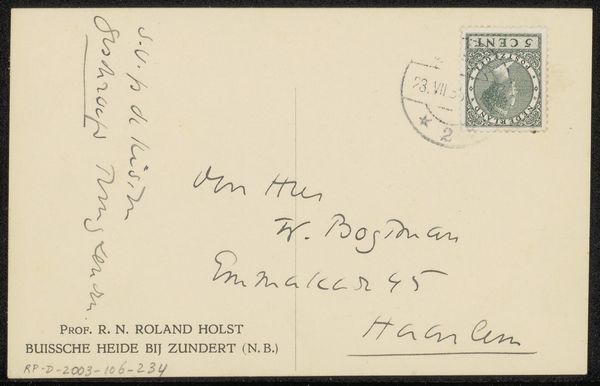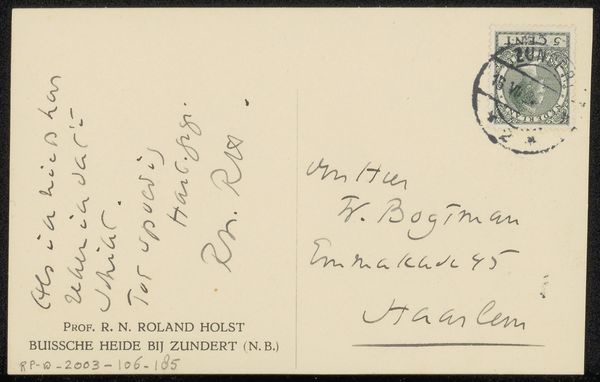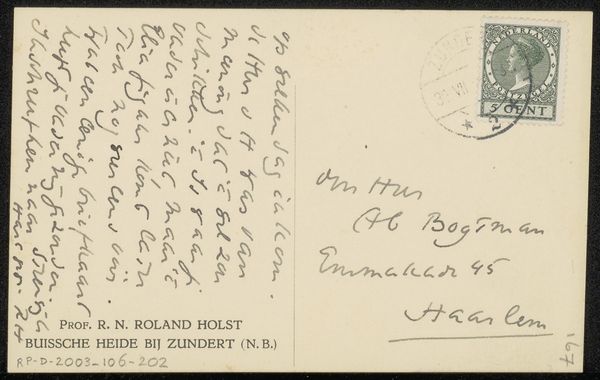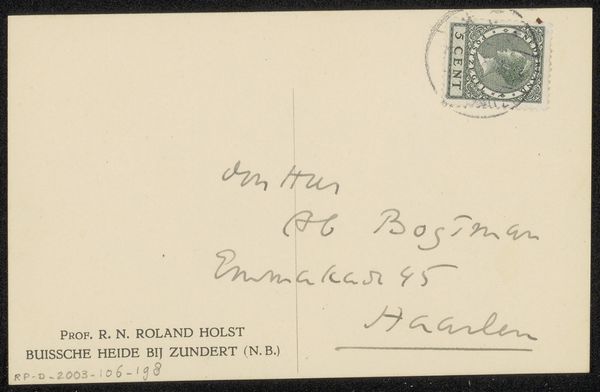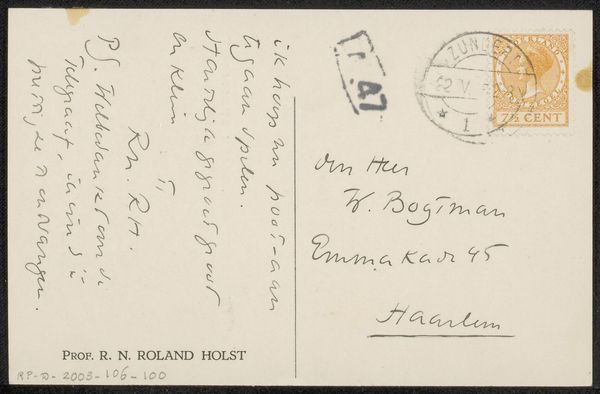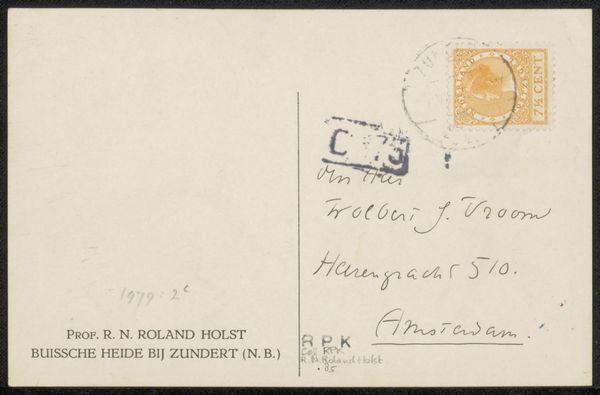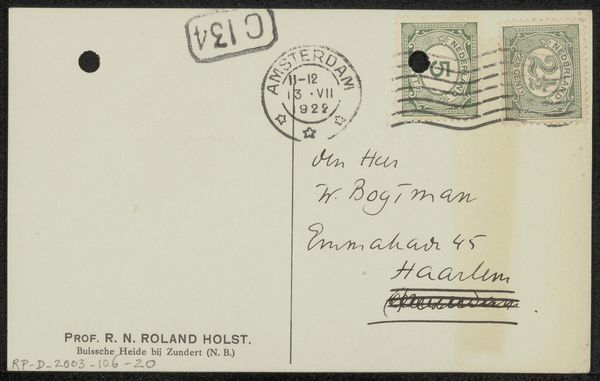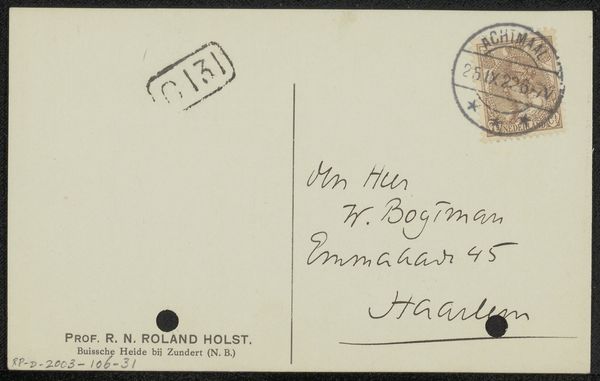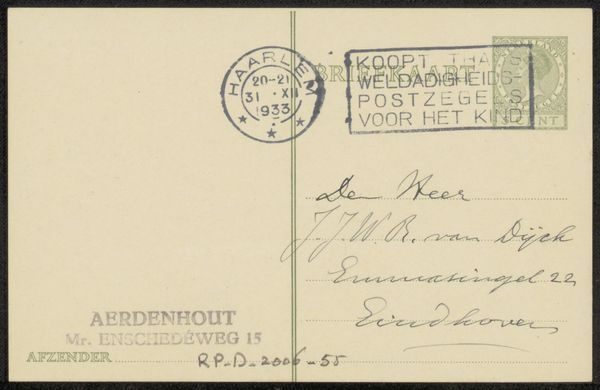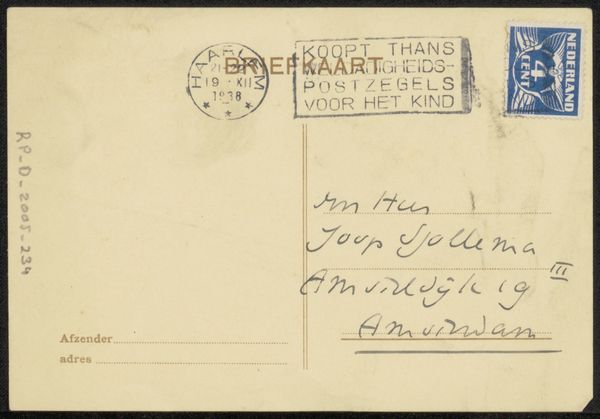
drawing, paper, ink
#
portrait
#
drawing
#
pen illustration
#
paper
#
ink
#
pen-ink sketch
#
pen work
Copyright: Rijks Museum: Open Domain
Curator: This object is a postcard, titled "Briefkaart aan Ab Bogtman," dating to before 1937, created by Richard Nicolaüs Roland Holst. The materials are listed as ink on paper. It resides in the collection of the Rijksmuseum. Editor: My initial impression? It’s intimate, almost clandestine, with that handwritten script. A fleeting thought captured on a piece of paper destined to travel. The everyday suddenly elevated, but who are the participants and to what narrative do they belong? Curator: Roland Holst, of course, the Dutch artist with an interesting political view, whose style pulls so strongly from symbolism. To find one of his thoughts so directly laid out feels very immediate, no? Postcards weren’t meant to hold volumes of meaning. They are fleeting glimpses into personal narratives, in some ways they can act as cultural artifacts representing ways people once communicated and experienced leisure. The placement of the stamp is telling—sealing a narrative to be physically taken somewhere to be shared or revealed, making the artwork interactive by design. Editor: I am certainly struck by how casually this artifact rests among more studied paintings of the time. It offers a certain accessibility through its mundanity; in that way, it serves as a stark reminder that access and visibility matter. It makes me question the narratives of those whose voices are never heard through art. Curator: Postcards of the time were relatively affordable objects—meant for quick dissemination of news or correspondence. It begs the question of what we as a culture immortalize and place value upon? What symbol is worth preserving and what isn't? What of the uncelebrated experiences? Editor: Perhaps Holst was reflecting this himself by making his postcard artwork worthy to be archived. Art imitates life and vice versa, perhaps, but more radically, life itself is art, and to record this artifact is a form of its activism and appreciation, and thus further preserves his artistic perspective. Curator: An echo caught on paper. It underscores how art can both reflect and shape cultural memory. Editor: Leaving me to consider whose echoes are not amplified in institutions. Whose missives remain unsent, unpreserved, and unheard. It asks me if the archive preserves fairly, or with privilege.
Comments
No comments
Be the first to comment and join the conversation on the ultimate creative platform.
